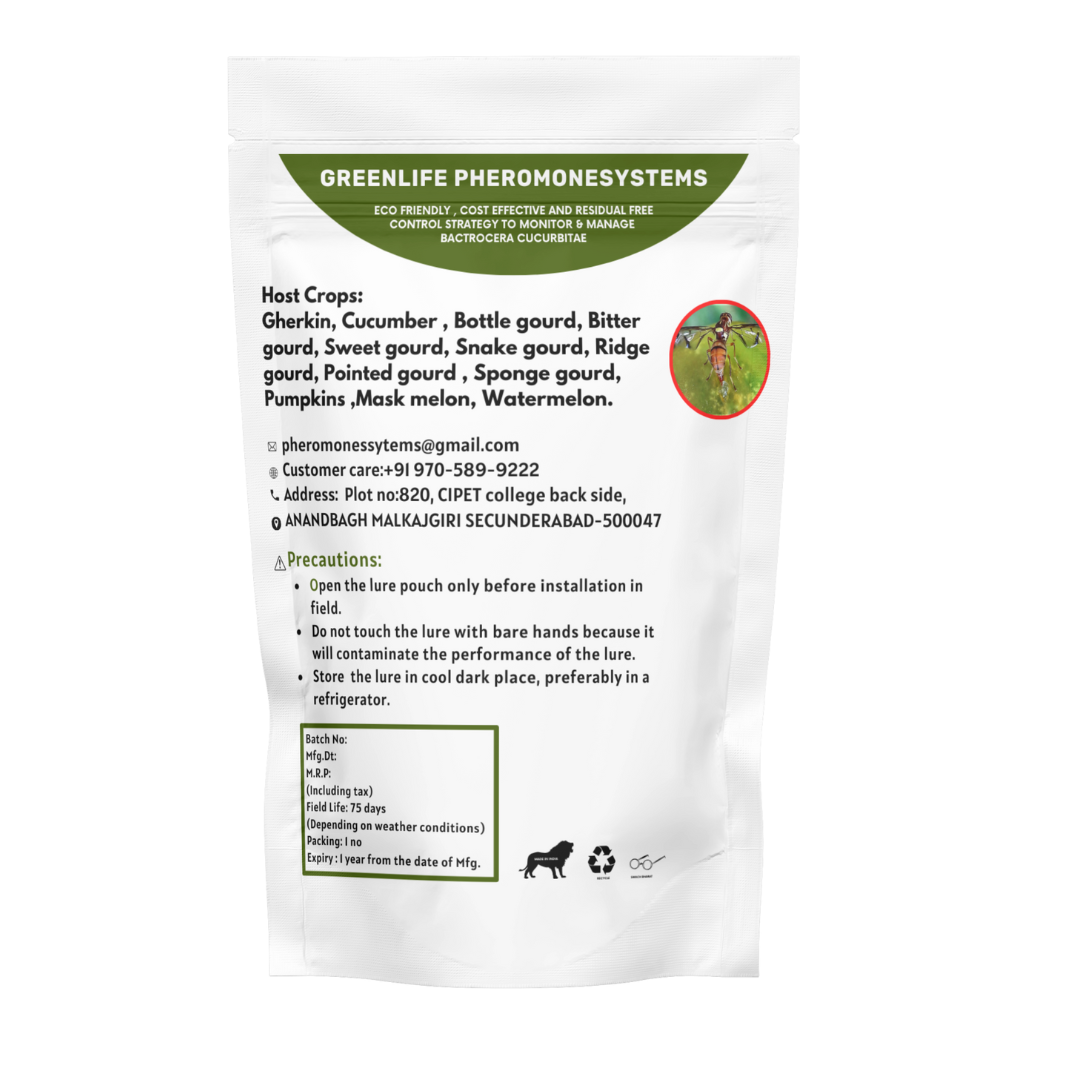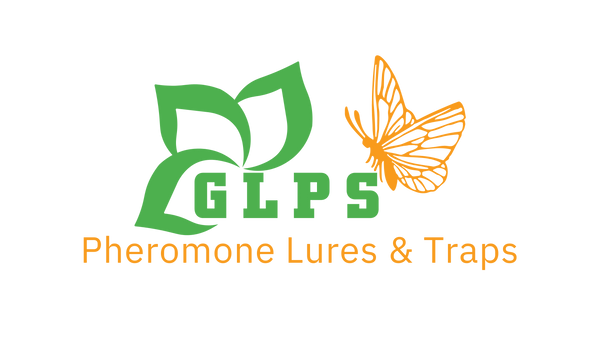Green life pheromone system
Bactrocera cucurbitae (MELON FLY)
Bactrocera cucurbitae (MELON FLY)
Couldn't load pickup availability
Pest Identification:
Adult melon fruit flies are similar in size to houseflies, about 6–8 mm long.
The body is light brown to a honey color in appearance.
There are several prominent bright yellow markings on the thorax (upper body) and a distinctive black 'T' pattern at the base of the abdomen (lower body).
The wings are clear, with a dark coastal vein and a "melon seed" shaped spot at the tip
Damage
- Melon fly cannot be controlled by pesticide spray.
- It prefers young, green, and tender fruits for egg-laying.
- The females lay the eggs 2 to 4 mm deep in the fruit pulp, and the maggots feed inside the developing fruits.
- At times, the eggs are also laid in the corolla of the flower, and the maggots feed on the flowers. A few maggots have also been observed to feed on the stems.
- The fruits attacked in early stages fail to develop properly and drop or rot on the plant.
- Since the maggots damage the fruits internally, it is difficult to control this pest with insecticides.
- One female may lay over 1,000 eggs during her life.
- Oviposition peaks occur in the morning and late afternoon. Eggs hatch in about 24 hours.
Control Measures:
-
Set up GLPS Easy fruit fly trap/GLPS Maxfill Trap with GLPS Mr.Melon fly pheromone Lure to monitor, attract and kill the male melon flies @5-8nos per acre
Pheromone Lure Details
|
Dispenser : Wooden Block containing insect attractant. |





BENEFITS
- Cost effective
- Easy & Simple to install
- Non-toxic and safe for environment
- Does not harm beneficial insects
- Scientific & Safe
- Confirms organic input standards
-
Pheromones are species specific and attract only target pest & Can be used all season long & Withstands sunlight & rain
Share




